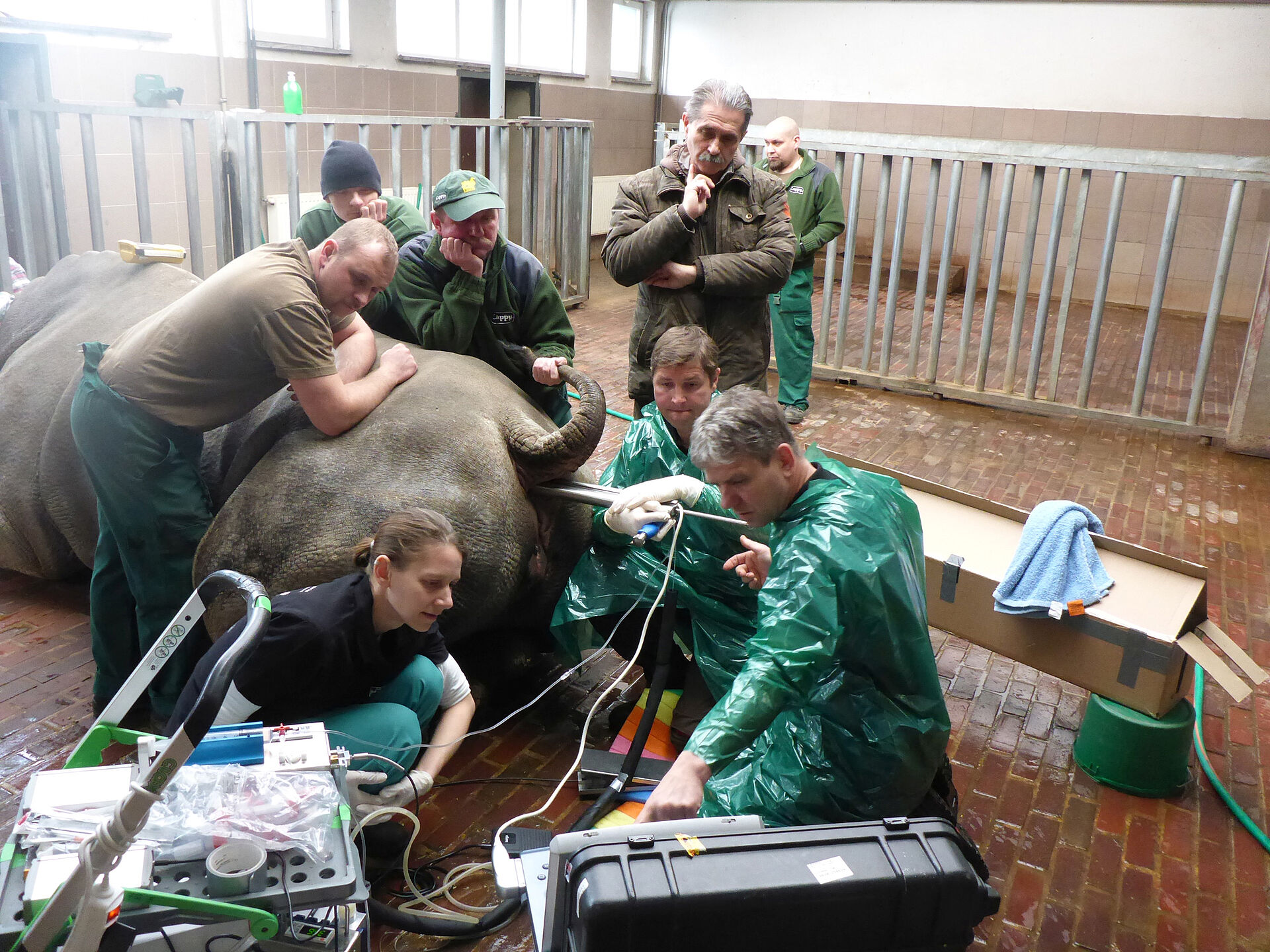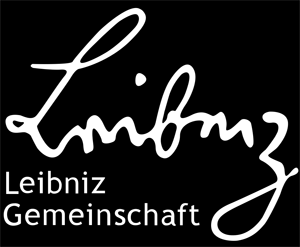March 19, 2018 marked a black day for conservation. On this sad day, Sudan, the last remaining male Northern White Rhino, quietly passed away. Najin and Fatu are the only individuals left, rendering the species “functionally extinct”. They can no longer produce offspring by natural means. When scientist Richard Lydekker first described this subspecies in 1908, there were thousands of them roaming the swamps of Central Africa. By the 1960s, the population was estimated to be only 2,250 animals strong in the wild: big-game hunters and poachers had brought the Northern White Rhino to the brink of extinction in just a few decades. Even today, there is still a high demand for rhino horn in Asian countries – above all, in Vietnam and China. The horns are illegally hunted for trophies, as status symbols and for traditional medicine. The United Nations estimates that animal traffickers annually turn over 200 billion dollars worth of illegal goods annually.
As a result of poaching, by the beginning of the 1990s, only a few more than a dozen Northern White Rhinos remained in the wild. They lived in Garamba National Park in the Democratic Republic of the Congo, and were closely guarded by park rangers and conservationists. These proactive measures yielded some success, and their numbers rose at least to 32 individuals. However, the civil war that erupted in the D.R. Congo in 1996 put an end to these initial successes. The park became overrun by armed rebels and poachers who filled their war chests by illegal rhino sales. By 2005, only four specimens were left in the park; in 2008, the International Union for the Conservation of Nature (IUCN) declared the Northern White Rhino “extinct in the wild”. Najin and Fatu, the last individuals left today, are the descendants of Sudan. Najin, Sudan’s daughter, was born in 1989 and gave birth to Fatu in 2000. For this reason, Fatu is sometimes called the “millennium baby”.
Under these conditions, saving the species seems impossible – how can two females reproduce? Hildebrandt, his team, and many international partners deeply believe that they can save this species from the brink of extinction by using state-of-the-art research and technology. “This important ‘landscape designer’ in Central Africa did not become extinct because its evolutionary master plan failed,” Hildebrandt explains. The animals were systematically eradicated by humans and their greed for horn. “It’s our turn to correct this massive ecological mistake with targeted conservation approaches.”
The full ecological impact of the Northern White Rhino’s disappearance is highly speculative. What scientists do know, however, is that many other species benefit from the presence of these giant grazers. They keep the landscape open, and transform habitats in ways that are beneficial for other animals. That is why scientists call them an “umbrella species” – if they suddenly die out, several other species will lose their basis of existence. “It is important to understand that the more natural resources we destroy, the more we lose our own basis of existence,” Hildebrandt stresses. “Our hope lies in future generations who will hopefully show more responsibility towards the planet’s resources.” The current discussion on the valorization of natural resources – assigning political, social, or economic value to them – sheds light on the consequences of our actions. “State-of-the-art species protection should mean early detection,” Hildebrandt says. This allows conservationists and policymakers to take rapid countermeasures, save resources, and sustain a common basis of existence. It is obvious that humanity has missed this boat for the Northern White Rhino, and the international team of scientists must be innovative to capitalize on this very last chance.
Even if there were any bulls left, Najin and Fatu could not produce offspring naturally. Their reproductive organs have transformed a common occurrence when wildlife does not reproduce for longer periods. Najin, the 29-year-old cow, has severe problems with her Achilles tendons, and would not be able to bear the additional 100 kilogram weight of the baby and the amniotic sac. The 16-month-long pregnancy is also associated with substantial transformations of the maternal blood circulation, which would pose another challenge Najin would not be able to handle. Therefore, the scientists plan to harvest ova from Najin and Fatu – just like they did in their tests with Hope – and artificially inseminate the eggs using the frozen sperm of a deceased male. The sperm of four Northern bulls is stored in the cryobank at the Leibniz IZW. If an embryo develops, a Southern White Rhino female could carry the calf and eventually give birth to a Northern White Rhino. The calf would live with its closest relatives, Najin and Fatu.
Relying only on artificial insemination and the surrogate approach would mean that the genetic variability of the subspecies would be too small to build a healthy, self-sustaining population. The greater the genetic variability, the better a species can adapt to changing environments. In order to achieve this variability in such a limited population, the scientists have developed another groundbreaking approach. They are attempting to develop gametes using stem cell technology. Frozen in different cryobanks in Berlin and San Diego, living cells from 13 different Northern White Rhinos have been stored for future use. From these cells, the scientists plan to generate induced pluripotent stem cells, followed by primordial gametes in the next step. Primordial gametes, in contrast to mature gametes, feature a double set of chromosomes and can be transformed into either egg cells or sperm cells in the laboratory. The subsequent embryos can be implanted into surrogate mothers of the southern subspecies and grow to become normal Northern White Rhino babies. The goal is to use the full genetic variability of the frozen cells.
Hildebrandt adds, “Attempts like these, with the use of high-tech and cutting-edge scientific techniques, are only possible within a consortium of many partners and with a budget to match. These partners are already working together, but sadly the funding is not yet complete.” The Leibniz IZW has been working with AVANTEA (an Italian reproduction laboratory), the Dvůr Kralóvé Safari Park in the Czech Republic, the Max Delbrück Center for Molecular Medicine at the Helmholtz Association (MDC) in Berlin, the Institute of Diabetes Research (IDF) at the Helmholtz Association in Munich, Kyūshū University in Japan and several partners from the United States of America. The team is striving to develop a blueprint for species conservation that can be implemented as the very last means. “Excellent research has opened up possibilities where we previously had to declare a species extinct. In the end, however, we wish that these techniques would not have been necessary in the first place. It just should not have come this far,” says Hildebrandt.
In Chorzow, Hope is still asleep and breathing evenly. Hildebrandt has sweat dripping from his forehead. He carefully carries the test tubes filled with follicle liquid to the microscope, puts on his glasses and drips the liquid into a petri dish. Suddenly, he smiles. They’ve got one! Hildebrandt grabs the ovum with a pipette and places it into the transport box. He knows that every single egg will bring the whole team one step closer to its goal – to save the Northern White Rhino when everything seems too late.
Text: Steven Siong Meng Seet
Support our project to save the Northern White Rhino from extinction: https://nwrextinction.org/

